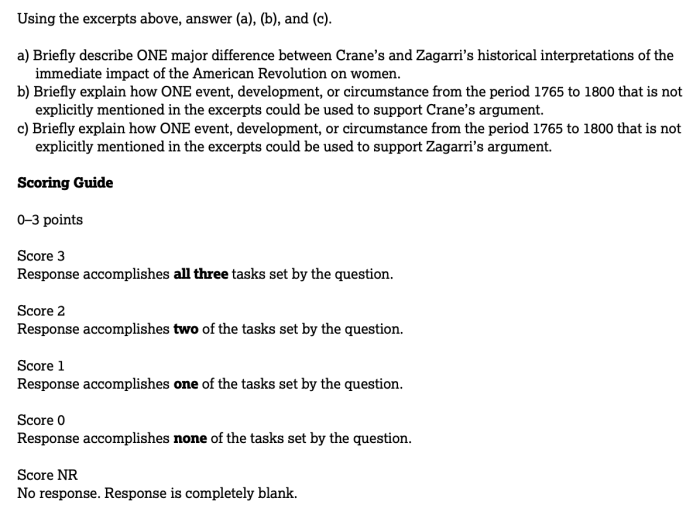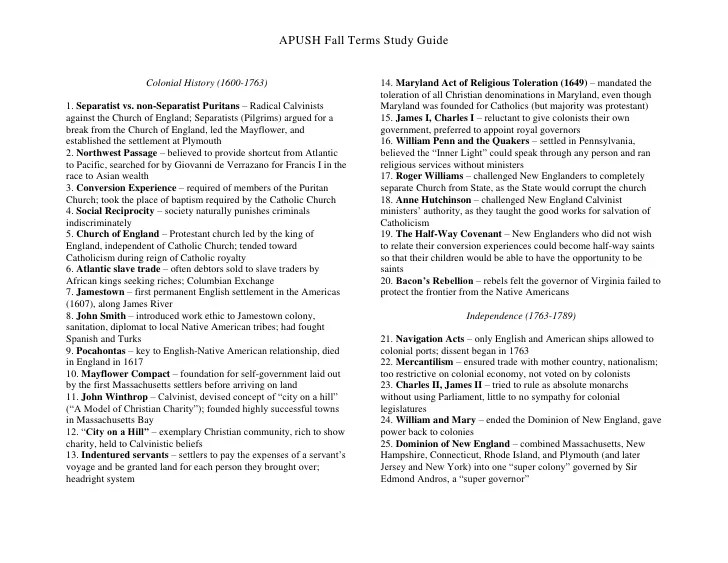Get ready to ace your APUSH Final Exam Semester 1 with this engaging guide! Dive into the major events, key figures, and transformative changes that shaped American history up to 1877.
We’ll explore the key concepts and themes that will likely be tested, helping you understand the significance of each era and how historians have interpreted them.
American History to 1877
The APUSH final exam semester 1 covers a vast period of American history, encompassing major events and themes that shaped the nation’s identity and development. This era witnessed significant social, economic, and political transformations, driven by key figures who played pivotal roles in the country’s growth.
European Exploration and Colonization, Apush final exam semester 1
The period began with European exploration and colonization, which led to the establishment of settlements along the Atlantic coast. The arrival of Europeans brought about significant cultural and demographic changes, as well as the introduction of new technologies and ideas that would shape the future of the United States.
The American Revolution
The American Revolution was a defining moment in the nation’s history, as colonists sought independence from British rule. Key figures such as George Washington, Thomas Jefferson, and Benjamin Franklin played crucial roles in the movement for independence, which resulted in the Declaration of Independence and the establishment of the United States of America.
Westward Expansion
After the Revolution, the United States embarked on a period of westward expansion, driven by the desire for land, resources, and economic opportunities. The Louisiana Purchase, the Lewis and Clark Expedition, and the Mexican-American War were pivotal events that facilitated the nation’s growth and westward movement.
The Civil War
The Civil War, fought between the Union and the Confederacy, was a major conflict that tested the nation’s unity and led to the abolition of slavery. Abraham Lincoln, Ulysses S. Grant, and Robert E. Lee were among the prominent figures involved in this pivotal event.
Reconstruction
The Reconstruction era followed the Civil War and focused on the rebuilding and reunification of the nation. The Thirteenth, Fourteenth, and Fifteenth Amendments were passed during this period, granting citizenship and voting rights to former slaves.
Industrial Revolution
The Industrial Revolution transformed the American economy and society, as new technologies and industries emerged. The rise of factories, the development of transportation networks, and the growth of cities led to significant social and economic changes.
Key Concepts and Themes

Understanding the key concepts and themes that shaped American history is crucial for success on the APUSH final exam semester 1. These concepts provide a framework for analyzing and interpreting the events and ideas that have shaped the United States.
The exam will likely focus on several key concepts, including:
- American Identity:The evolving definition of American identity and its impact on the nation’s development.
- Individualism:The emphasis on individual rights, self-reliance, and personal achievement in American society.
- Democracy:The principles of popular sovereignty, limited government, and the rule of law that have shaped the American political system.
- Expansionism:The territorial expansion of the United States and its consequences for the nation and its people.
- Reform:The ongoing efforts to improve American society, including movements for social justice, economic equality, and political change.
These concepts are interconnected and have played a vital role in shaping the American experience. By understanding their significance and how they have been interpreted by historians, students can gain a deeper understanding of American history and prepare for the challenges of the APUSH final exam.
Historical Periods

The APUSH final exam semester 1 covers several significant historical periods in American history. Each period is characterized by distinct events, figures, and concepts that shaped the nation’s development.
The following table provides an overview of the key historical periods included in the exam:
| Historical Period | Key Events | Important Figures | Key Concepts |
|---|---|---|---|
| Colonial Era (1492-1763) |
|
|
|
| American Revolution (1763-1789) |
|
|
|
| Early Republic (1789-1828) |
|
|
|
| Antebellum Era (1828-1861) |
|
|
|
Each of these historical periods played a crucial role in shaping the United States. The Colonial Era laid the foundation for the nation’s institutions and values. The American Revolution established the United States as an independent nation and defined its principles of government.
The APUSH final exam for semester 1 is coming up soon, and I’m feeling a bit nervous. I’ve been studying hard, but I can always use a little extra help. That’s why I’m checking out chapter 14 bless me ultima for some additional insights.
I’m hoping that by understanding the themes and characters in this chapter, I’ll be better prepared for the exam.
The Early Republic witnessed the expansion of the nation and the development of its political system. The Antebellum Era was marked by economic growth, social change, and increasing tensions between the North and South.
Primary and Secondary Sources

Understanding the distinction between primary and secondary sources is crucial for success on the APUSH final exam. Primary sources provide firsthand accounts of historical events, while secondary sources interpret and analyze those events.
Types of Primary Sources
- Documents: Letters, diaries, speeches, government records, newspapers
- Artifacts: Objects, buildings, clothing, tools
- Images: Photographs, paintings, maps
- Oral histories: Interviews with people who experienced the past
Types of Secondary Sources
- Textbooks: Synthesize and interpret historical events
- Scholarly articles: Present original research and analysis
- Biographies: Focus on the lives of individuals
- Documentaries: Film or video presentations that use primary sources
Analyzing and Interpreting Sources
To effectively use primary and secondary sources, consider the following:
- Source:Identify the type of source, its creator, and its purpose.
- Context:Understand the historical context in which the source was created.
- Perspective:Recognize that sources reflect the biases and perspectives of their creators.
- Evidence:Extract specific evidence from the source to support your arguments.
Using Sources to Support Historical Arguments
Primary and secondary sources can be used to support historical arguments by:
- Providing direct evidence to support claims.
- Contrasting different perspectives to illustrate the complexity of an issue.
- Using secondary sources to provide context and interpretation.
Essay Structure and Content: Apush Final Exam Semester 1
A well-structured essay is essential for success on the APUSH final exam. A strong essay will have a clear thesis statement, supporting evidence, and a strong conclusion.
Thesis Statement
The thesis statement is the central argument of your essay. It should be specific, arguable, and supported by evidence. A good thesis statement will tell the reader what your essay is about and how you will prove your argument.
Supporting Evidence
The body of your essay should provide evidence to support your thesis statement. This evidence can come from a variety of sources, including primary and secondary sources. Primary sources are firsthand accounts of events, such as letters, diaries, or speeches.
Secondary sources are works that interpret or analyze primary sources, such as textbooks or scholarly articles.
Conclusion
The conclusion of your essay should restate your thesis statement and summarize your main points. It should also provide a final thought or insight that leaves the reader with a lasting impression.
Examples of Well-Written Essays
Here are some examples of well-written essays that demonstrate the elements of a strong essay structure:
- The Declaration of Independence: A Call for Revolution
- The Causes of the American Civil War
- The Impact of the Industrial Revolution on American Society
Test-Taking Strategies

Preparing for the APUSH final exam semester 1 can be daunting, but with the right strategies, you can maximize your chances of success. Effective test-taking strategies can help you manage your time, understand the material, and approach questions strategically.
Time management is crucial. Before the exam, create a study schedule that allows you ample time to review the material and practice answering questions. During the exam, allocate your time wisely, spending more time on questions you’re confident in and returning to the more challenging ones later.
Note-Taking
Effective note-taking can help you retain information and recall it during the exam. Highlight key concepts and terms, and use abbreviations or symbols to save time. Organize your notes into logical sections, and review them regularly to reinforce your understanding.
Practice Questions
Practice questions are invaluable for preparing for the exam. They help you identify areas where you need improvement and familiarize yourself with the types of questions you’ll encounter. Approach practice questions strategically by analyzing the question carefully, identifying key terms, and using the process of elimination to narrow down your choices.
Q&A
What are the major themes covered in APUSH Final Exam Semester 1?
Key themes include westward expansion, the development of political parties, the rise of industrialization, and the impact of immigration.
How should I approach primary and secondary sources for the exam?
Analyze primary sources for historical context and biases, while using secondary sources to interpret and support your arguments.
What are effective test-taking strategies for the APUSH Final Exam?
Manage your time wisely, take clear notes, and use practice questions to identify areas for improvement.